
Women have been fascinated with beauty for centuries. Part of that fascination is perfection. In order to achieve that perfection, women have been using makeup to cover up their blemishes. There comes a point in a woman’s life where there is a need for a cover up, whether it be a portion of the face, full face, or body. Using makeup to cover pimples, blemishes, acne, and pigmented areas with makeup is rarely a bad idea. Women experiencing these unwanted skin conditions tend to feel that they have awful skin, thus leading to covering up a lot more of their skin than needed and sometimes even lowering their self-esteem. As a makeup artist, I teach women how to select the proper color correcting formula and techniques to create a flawless finish without bringing attention to problem areas. With these techniques, the goal is to flatter the viewing eye.
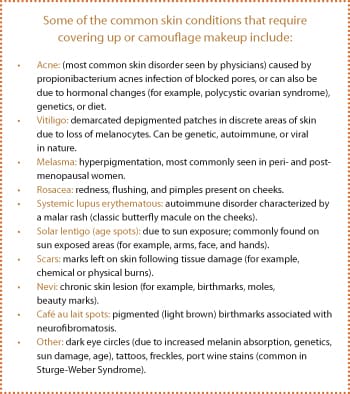
Whatever the process one wishes to take, there is one goal in mind: covering up imperfections. When choosing an appropriate shade of camouflage makeup for your clients, I recommend trying it on the neck first (apply a small dab to the neck and blend) to truly match the shade of your client’s skin. Once you match the shade with her neck, the overall complexion will be void of a two-toned neck on head appearance.
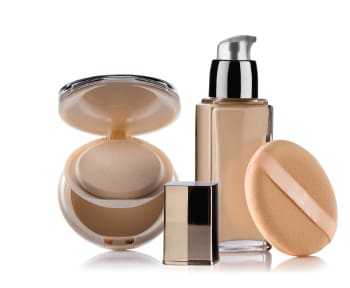
Light or sheer coverage has the least pigment and is typically achieved by using a liquid foundation, tinted moisturizer or mineral foundation. This type of cover up is best for women who suffer from mild pigmentation disorders and desire an even skin tone. Light coverage is a good choice for covering up freckles.
Medium coverage is used to cover up blotches and redness. Most women use medium coverage as their daily routine, since it provides an even finish without looking cakey. Medium to full coverage is based on layering the product to achieve the desired cover up. Full coverage foundation is opaque and contains the most pigment. It tends to be richer, so it is used to cover up significant discoloration such as that seen in vitiligo, rosacea, and other pigmentation. I caution using full coverage makeup as it tends to appear cakey, if not applied correctly.
Getting Started
Always start off with a pH balanced cleanser. This ensures that your client’s face is properly clean and will sustain makeup for an extended period of time. Also, pH balanced cleansers prevent irritation or unfavorable reactions. Make sure to rinse your client’s face thoroughly and remove all soap. This prevents emulsification of the makeup on soapy skin. For a deeper cleanse, remove any dead skin cells by exfoliating. Exfoliation helps brighten dull skin and creates an even surface for a flawless foundation application. 
Since the skin around the eye tends to be an area of concern with most women, it is important to address the puffiness and dark circles. The skin around the eyes is delicate, so one should dab eye cream just below the client’s eyes. Puffiness is due to a buildup of fluid and blood under the eyes. Dark circles can be due to genetics, age, sun damage, and blood buildup. Creams fortified with vitamin C (sodium ascorbate) helps thicken the skin and conceal dark circles. Your clients can actually see great results after about six months of usage. Creams fortified with vitamin B3, or kojic acid, help lighten dark circles by suppressing melanin production. For the avid caffeine drinkers, studies show that caffeine increases circulation and reduces puffiness, so enjoy that next cup!
Beauty Tip: For optimal results, refrigerate your eye cream. The cool cream will increase circulation and reduce puffiness in your client’s eyes.
Next, apply a light moisturizer with sunscreen and follow up with a base primer. Key ingredients in the moisturizer include acetyl hexapeptide-8 to reduce the appearance of fine lines and hyaluronic acid to hydrate the face. A moisturizer with sunscreen is always recommended to protect the skin against sun damage. Applying a base primer fills in fine lines and pores and ultimately prepares the skin to create the perfect canvas for a flawless foundation application. I tend to apply primer with a foundation brush or with my clean hands. I recommend primers that contain titanium dioxide and zinc oxide. Titanium oxide reflects UVA/UVB rays to protect skin from sun damage. Zinc oxide provides anti-inflammatory properties and absorbs UVA/UVB at the surface of the skin. Silicone-based primers are a staple in my kit. The silicone fills in any fine lines or wrinkles in the face, and provides an overall smooth surface for the application of foundation. There are some products formulated with a dual action: moisturizer and primer in one. I tend to use those because it is fewer products on the face.

As the name suggests, concealer acts to conceal or camouflage any imperfections on the skin. Concealer should never be applied to the entire face. It should be used to cover up areas of imperfection. They come in a variety of shades with liquid or cream formulations. Cream concealers are typically thick, whereas liquid concealers are thinner, similar to liquid foundation. For covering up pimples, cream concealer works best. I recommend choosing a concealer that matches your client’s complexion. In order to pick up a dime sized amount, start by rubbing the finger on the concealer, then dab onto the imperfection until it blends in with the surrounding skin. Blending helps even out product, as well as provides an even tone. You can apply concealer with a concealer brush made with taklon fibers, a sponge applicator, or even your fingers. For women suffering from acne, scars, or burns, use a cream concealer fortified with vitamin E and titanium dioxide. Vitamin E, an antioxidant, softens the skin and provides a protective layer of titanium oxide protection against UVA and
UVB rays.
Concealers also come in a variety of colors found on a color wheel. These are corrective concealers. The idea is to apply complimentary colors to create beiges (skin tone) and ultimately neutralize unwanted pigmentation. Green concealer counteracts the redness seen in conditions such as rosecea, acne, and scars. Orange concealer covers blue hues such as those present in veins and dark circles. Yellow concealer covers any purple discoloration (dark circles, bruising, and scarring). Purple concealer covers yellow skin, typically seen in jaundice. Lastly, pale pink lightens any dull skin with grayish undertones. These colored concealers are applied with different tools, depending on the area being covered up. A dampened sponge is used for large areas such as the face. A small stippling brush is used for covering up large, textured areas. For small areas like under the eyes, use a flat shader brush or finger. For smaller textured areas like pimples, use a small concealer brush. As with flesh-toned concealer, blend, blend, and blend. After blending concealer, set it by fluffing pale or white translucent powder. Setting the concealer will help to not disturb any of it with next application of foundation.
Since cream concealers will glide across the area nicely and not settle into fine lines, use a cream concealer for dark circles around the eye. Dab the concealer only onto the dark circles, then blend. Follow up the concealer application with setting via translucent powder that has slight sheen, which adds illumination. After all concealer application is set, you can move onto foundation as desired.
Beauty Tip: If finding the exact shade of concealer is difficult, find the two shades that are the closest match and mix them together to make a perfect shade.
Foundations
Foundation is a staple in most women’s makeup kit, especially those who have skin discoloration. A large number of women have trouble finding the right shade when it comes to foundation. Searching for the perfect foundation is like searching for the Holy Grail. Offer your clients professional consultation to find the right shade and formulation for their skin type. Foundations are broken down into warm (yellow, golden, or peach undertones) and cool (pink, red, or blue undertones) formulations. Assess your client’s undertone and choose the appropriate formulation. I also recommend choosing foundation based on your client’s skin type (oily versus normal versus dry). Mattifying foundations are best for combination – oily skin types and hydrating foundations are best for dry skin. Normal skin can use a variety of foundations.
Tools such as a stippling brush, foundation brush, beauty blender, sponge applicator, or even the pads of your three middle fingers are great for applying foundation. Your technique for applying foundation will make a huge difference in the desired outcome. The goal is to make sure you cover all the nooks and crannies by blending thin layers onto the skin. Blending thin layers is a way to avoid the dreaded cake face. Remember that when applying foundation, a little goes a long way, so it is best to dot foundation on areas of uneven skin tone and blend outward to help distribute product all over and again. Using your fingers to apply foundation (or concealer) allows your body heat to warm up the product, thereby melting it on the skin. Sponges and brushes provide great even coverage, so choosing a tool is really based on your preference. For a flawless application, use a patting motion as opposed to wiping motion. Patting will secure the foundation in place. All these techniques of dotting, blending, patting thin layers toward the hairline and below the chin will give you a natural and flawless application. Set the foundation by lightly dusting a setting powder (using a large powder brush) onto your client’s face. Types of setting powder include pigmented, translucent, or mineral formulations. 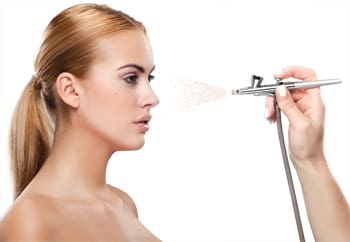
For light to medium coverage in a powdered form, one may opt for mineral makeup or powder foundation. Common minerals included in it are zinc oxide and titanium oxide. Caffeine and mushroom extract found in mineral makeup helps calm the skin and minimize areas of redness. Mineral makeup is a great alternative for women who desire a more natural product. For example, there are mineral makeup formulations that are specifically vegan, gluten free, or paraben free. Apply mineral foundation after concealer, using a powder brush, then set with a mineral veil or translucent powder. Powder foundation is good for desired light to medium coverage and can be set with a mineral veil. Powder can be cakey on dry skin, so for brides or women with oily skin who tend to perspire, matte foundation is a great option. Makeup slips on oily skin, so using a mattifying foundation and primer will help control shine. Also, the matte formulation helps block oil from being released without clogging the client’s pores.
Beauty Tip: For sheer coverage, you can mix your foundation with your moisturizer. This newly thinned formula acts as a tinted moisturizer, providing your desired coverage.
Airbrush Makeup
Makeup is evolving. One new innovation is airbrush foundation. The airbrush was first used in the late 1800s to spray watercolors onto various surfaces. Airbrush foundation was first used by makeup artists on television sets, runways, and for special occasions, including weddings, with the intention of looking camera ready. Companies have developed miniature and easy-to-use airbrush machines, bringing a new form of technology into the home of many women. Airbrush provides a natural appearance to skin and does a great job at covering up discoloration, stretch marks, spider or varicose veins, tattoos, scars, and those dreaded dark under-eye circles. As with other foundation and concealer formulations, start by matching the shade with the skin. An airbrush pen is attached to an air compressor, using pressurized air to create a moving force; the user activates and controls how much foundation is being sprayed from the airbrush pen. As the user pulls the trigger for the machine, air and minute dots of foundation are sprayed onto the aimed area via the pressure of the air compressor. This technique was once used by only professionals, however, in recent years, companies have developed spray can formulas and miniature airbrush machines, making this technology more user-friendly for women who are not makeup professionals. The difference in the spray can is that it is inexpensive, more portable, and can be discarded once the can is finished. Traditional airbrush machines require disassembling and cleaning between uses and are stored in a special case. Airbrushing provides a light, natural, flawless finish, making it a staple method for bridal makeup. The airbrush quality has also been greatly enhanced with the advent of high definition television, adding more vibrancy to the skin of anyone on the big screen. The great thing about airbrush makeup is that once sprayed on, the makeup is water resistant. It will not come off like regular makeup and lasts up to 10 hours, thereby significantly reducing the amount of touch ups a person requires.
Beauty Tip: Apply airbrush foundation below the chin and lip to get more of an even tone.
The various addressed skin conditions are also treated with prescription medications. Giving your doctor a detailed history of your skin conditions and lifestyle has a great impact on the overall care and treatment of skin conditions. For conditions such as rosacea that require medical management, you must consult with your physician regarding any skin care and makeup that you use. If already taking medication for skin conditions, some cosmetics may have ingredients that are potentially hazardous or may cause an unfavorable drug reaction. Your doctor will be able to make recommendations for you.
The art of covering up imperfections can be achieved in many ways, with precision. Like any art form, covering up or camouflaging skin imperfections takes practice and patience, along with using the right tools. Remember, flawless makeup starts with great skin care!




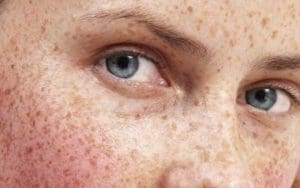
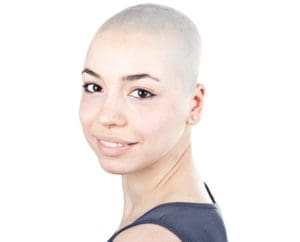











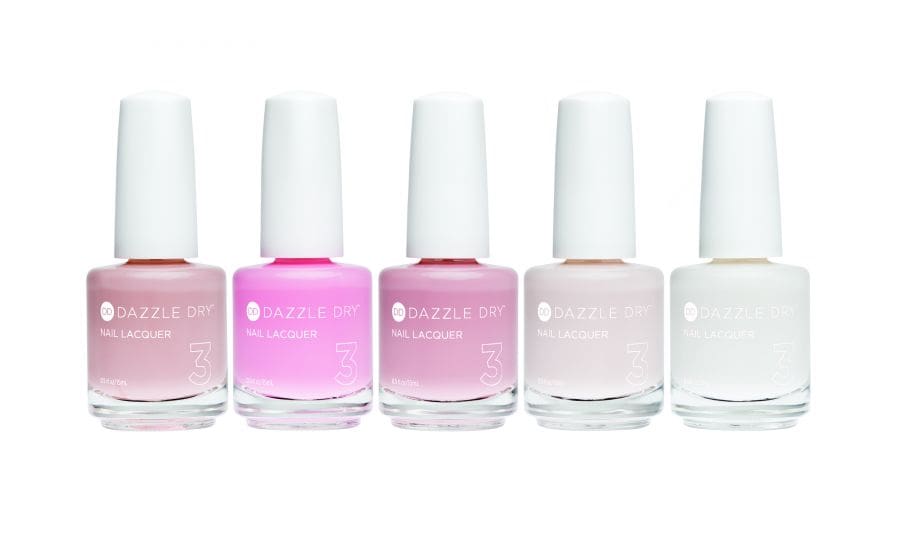












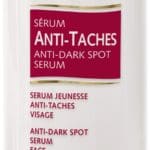

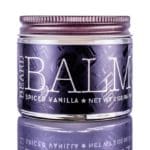



0 Comments